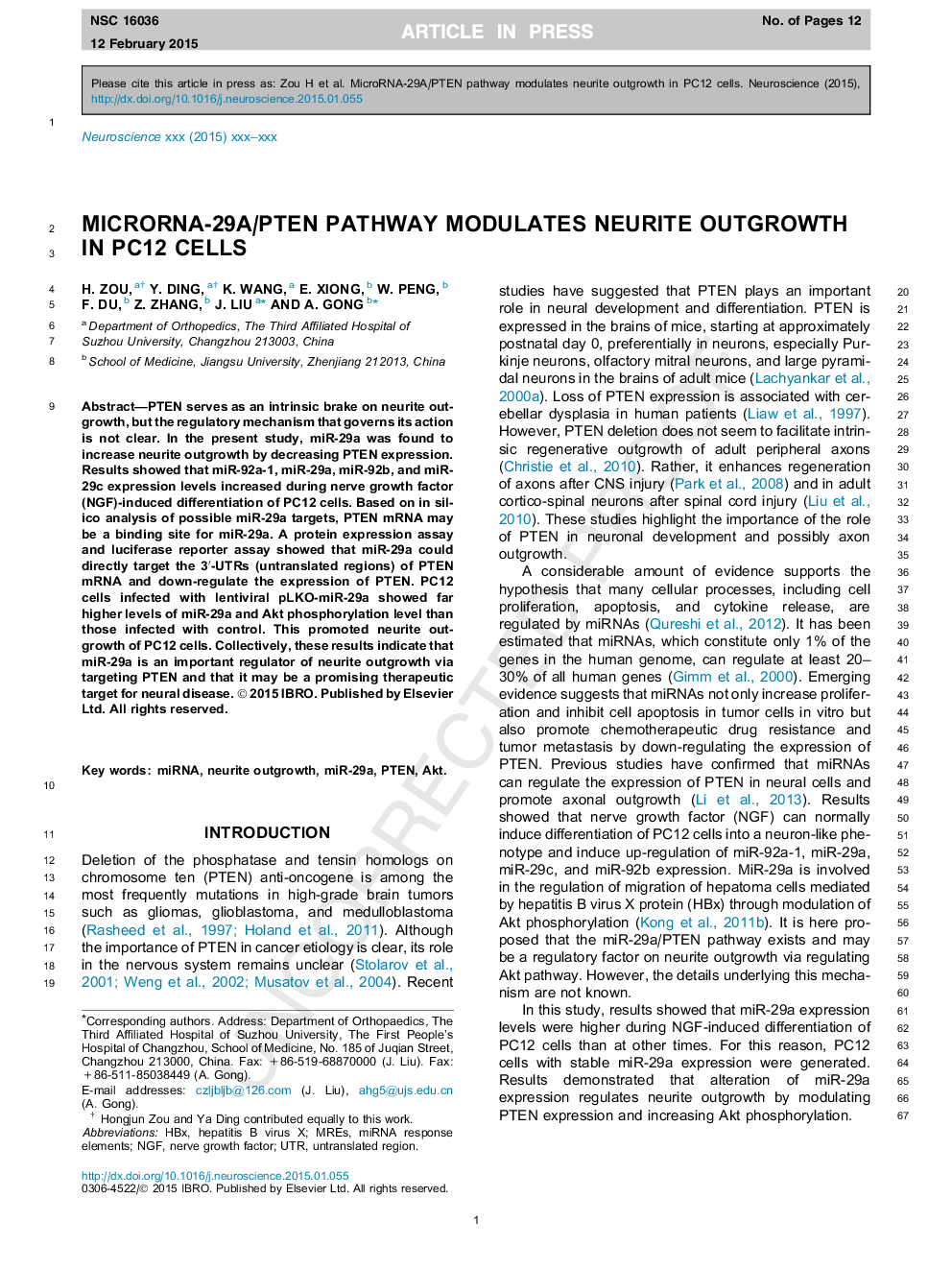| Article ID | Journal | Published Year | Pages | File Type |
|---|---|---|---|---|
| 6272750 | Neuroscience | 2015 | 12 Pages |
Abstract
PTEN serves as an intrinsic brake on neurite outgrowth, but the regulatory mechanism that governs its action is not clear. In the present study, miR-29a was found to increase neurite outgrowth by decreasing PTEN expression. Results showed that miR-92a-1, miR-29a, miR-92b, and miR-29c expression levels increased during nerve growth factor (NGF)-induced differentiation of PC12 cells. Based on in silico analysis of possible miR-29a targets, PTEN mRNA may be a binding site for miR-29a. A protein expression assay and luciferase reporter assay showed that miR-29a could directly target the 3â²-UTRs (untranslated regions) of PTEN mRNA and down-regulate the expression of PTEN. PC12 cells infected with lentiviral pLKO-miR-29a showed far higher levels of miR-29a and Akt phosphorylation level than those infected with control. This promoted neurite outgrowth of PC12 cells. Collectively, these results indicate that miR-29a is an important regulator of neurite outgrowth via targeting PTEN and that it may be a promising therapeutic target for neural disease.
Keywords
GAPDHRIPAHBxNGFMREsmiRNA response elementsPVDFHepatitis B virus XFBSDMEMPBSMiR-29aSDS–PAGEradio-immunoprecipitation assayAktsodium dodecyl sulphate-polyacrylamide gel electrophoresisDulbecco's minimum essential mediumNeurite outgrowthfetal bovine serumnerve growth factorUTR یا untranslated regions untranslated regionMiRNAPolyvinylidene fluoridePtenglyceraldehyde-3-phosphate dehydrogenase
Related Topics
Life Sciences
Neuroscience
Neuroscience (General)
Authors
H. Zou, Y. Ding, K. Wang, E. Xiong, W. Peng, F. Du, Z. Zhang, J. Liu, A. Gong,
